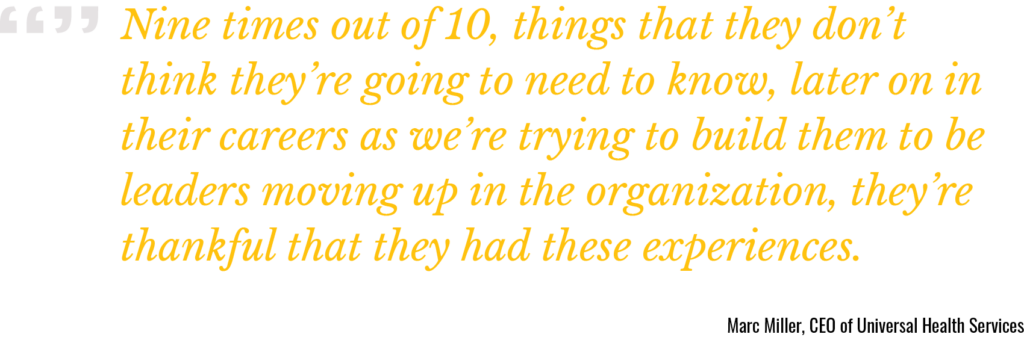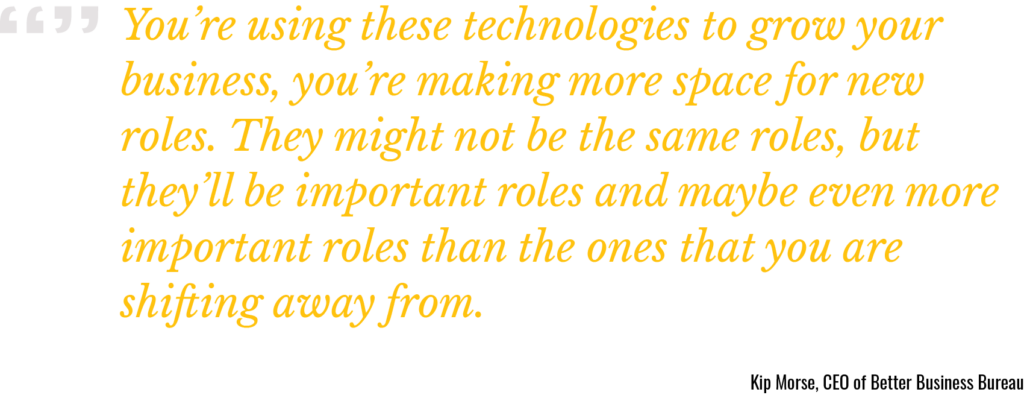What would you do if you weren’t afraid? Four ways today’s CEOs are breaking out of their comfort zone.
Purple Strategies is the thought leadership partner of The CEO Forum Group and Transformative CEO Summit series, featuring CEOs of leading companies discussing creative ways to solve today’s most pressing challenges.
As leaders, CEOs are constantly being asked to lead in situations that are outside of their comfort zone and present considerable risk. CEOs need to make daily decisions about issues like rapid advances in truly transformative technology like AI, how to manage ongoing geopolitical and macroeconomic headwinds, and meeting the ever-increasing expectations of key stakeholders. How leaders respond during these times can set up opportunities that benefit the business and its employees in the long-term, change an industry for the better, and even drive society forward. Meeting the moment requires courage in the face of uncertainty.
From discussions among CEOs at The CEO Forum Group’s latest Transformative CEO Summit, Purple Strategies identified concrete actions that leaders from across industries are taking that create the conditions to display courageous leadership in the face of change.
(1) Build and empower a team
While CEOs are expected to own and lead their vision, transformative leaders acknowledge they are not doing it alone. The pursuit of that vision is a dynamic process that involves fostering collaboration, a shared sense of purpose, and reliance on a trusted team to provide courage and support.
First and foremost, stresses Steve Jones, Global Chairman & CEO of Allied Universal, is the importance of building a team of leaders with a mix of talent from inside the company/industry and outside of these spaces. Assembling a diverse and talented group with varied skills and experiences – including those within and outside the company – encourages more effective leadership over assembling a leadership team solely from within the organization, which can pose challenges such as limiting innovation or the development of an insular, exclusive culture.
That CEO focus on empowerment expands beyond the composition of a leadership team to a company’s broader culture as well. Nearly half of Summit CEOs surveyed selected collaboration and empowering team members to use their strengths and be leaders as the most important area to prioritize to improve the culture of their organization.

(2) Cultivate your own confidence and character
CEOs often cultivate their confidence and character through courageous decision making. Every CEO at the Summit reported that they make decisions outside their comfort zone. Six in 10 said they do so frequently.
CEOs tap into different sources to drive that confidence for making tough decisions. Xavier Mufraggi, CEO of SVN International Corp., cites data as a source of confidence: While making a decision that might not be popular takes courage, he says, using data to back up results creates more confidence in sticking with a choice. Mara McNeill, CEO of Toyota Financial Savings Bank, notes her very appointment to the role as a source from which she derives confidence: “If I was put in this position, I’m supposed to be here.”
Scenario planning is another place CEOs develop confidence for their decisions. Creating a plan for how to operate in difficult situations, even in scenarios that might be unpredictable, is a key to successful leadership.
(3) Foster psychological safety and a growth-mindset culture
CEOs play a crucial role in developing an organization’s capacity to provide employees with psychological safety, which is critical to a willingness to take risks and contribute ideas. One way CEOs foster that needed safety is by creating a culture of consistently asking for feedback, starting with leadership. Modeling that behavior reduces stress on those who may feel uncomfortable sharing feedback unprompted and helps ensure important feedback is able to be received.
Another step CEOs are taking is putting developing leaders in new and challenging scenarios to help foster a culture of experimentation where all ideas are heard. Marc Miller, CEO of Universal Health Services, has seen that a leader’s cross-training and exposure to things outside of their daily responsibilities creates a sense of empathy when working with others.
CEOs also advise that, to create an open employee culture, failure should be embraced as a means of learning and growing. Humility on the part of leaders and CEOs in admitting mistakes, showing a willingness to learn, and seeking feedback are all important in strengthening trust with employees and unlocking the growth mindset CEOs want to see in their organizations.

(4) Embrace continuous learning
Today’s modern leaders embrace continuous learning as a way to keep pace with – or ideally stay ahead of – change. AI adoption is an excellent current example of this in action. CEOs see AI as enabling businesses to analyze far more data than before, empowering leaders to use a data-driven approach to grow the business and stay ahead of industry changes.
Todd Simon, Chairman of Omaha Steaks, spoke of the benefits of AI in helping to upskill employees. His company is already using AI technology to scan sales calls to identify the highest performing call reps, which in turn saves the business time and money. AI can also identify gaps in trainings, skill sets and culture.
Rather than avoid AI out of a sense of fear or risk, courageous CEOs are eager to deepen their understanding of AI before facing changes: four in ten Summit CEOs report feeling that investing in education and training around AI is the best way to unlock the promise of AI within their organization. By proactively leveraging AI-driven capabilities, CEOs can integrate new and accelerated opportunities for continuous learning into their business.

Explore more from Purple Strategies in the Transformative CEO Summit series:

 Reclaiming Trust When Under Fire
Reclaiming Trust When Under Fire  Reclaiming Trust When Your Products – and Intentions &...
Reclaiming Trust When Your Products – and Intentions &...  Brad Dayspring Joins Purple Strategies as Executive Director
Brad Dayspring Joins Purple Strategies as Executive Director  Celebrating Growth and Leadership at Purple
Celebrating Growth and Leadership at Purple